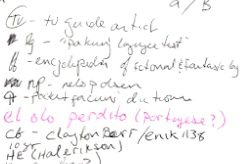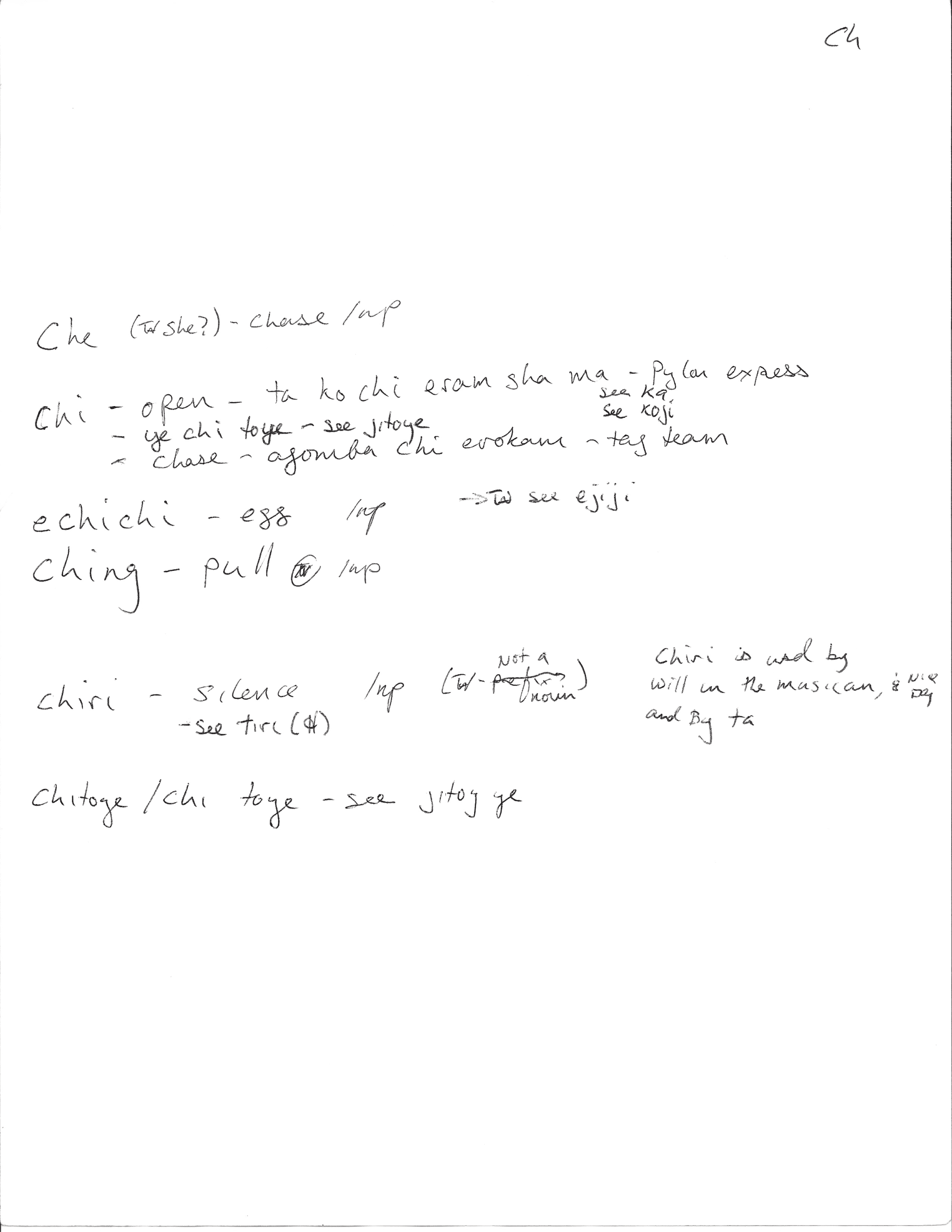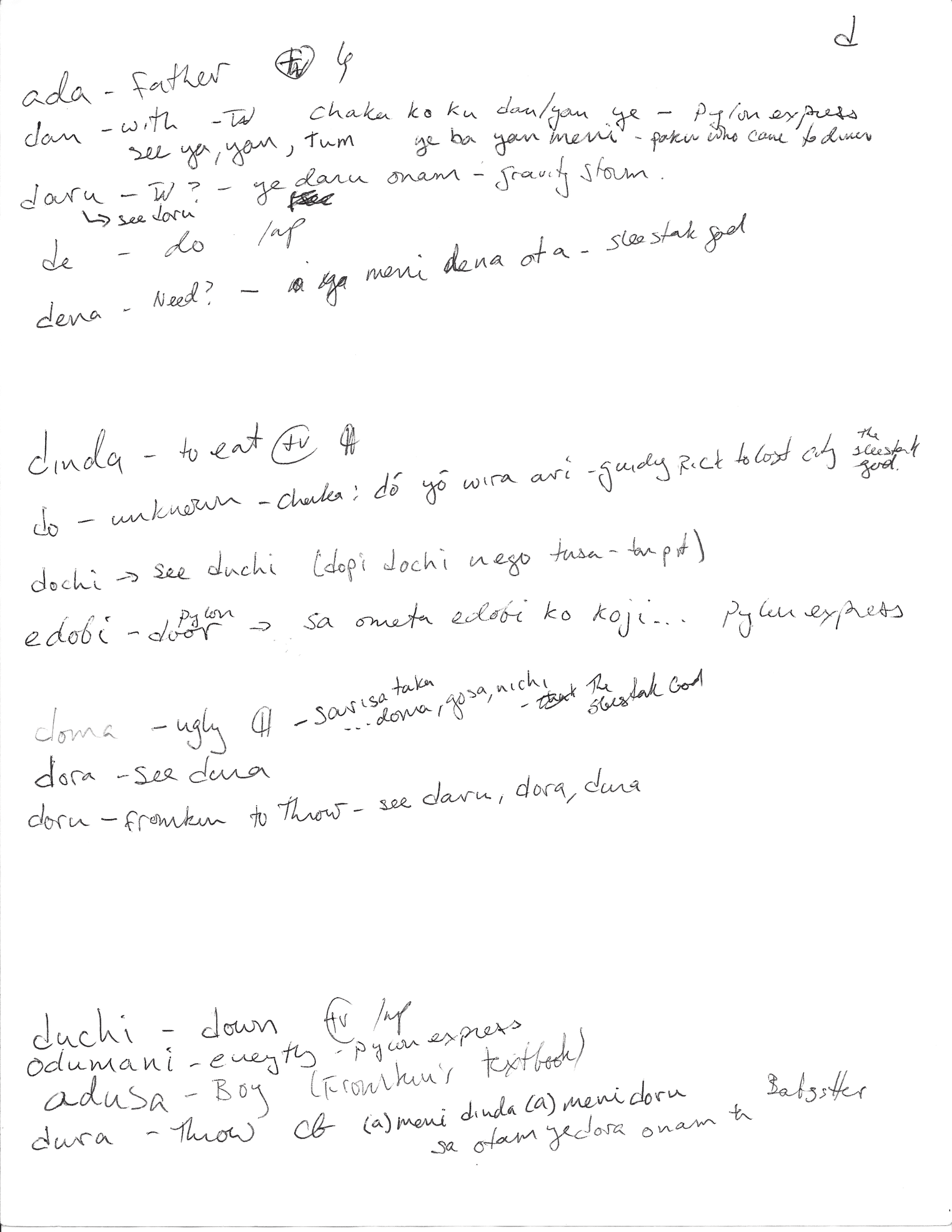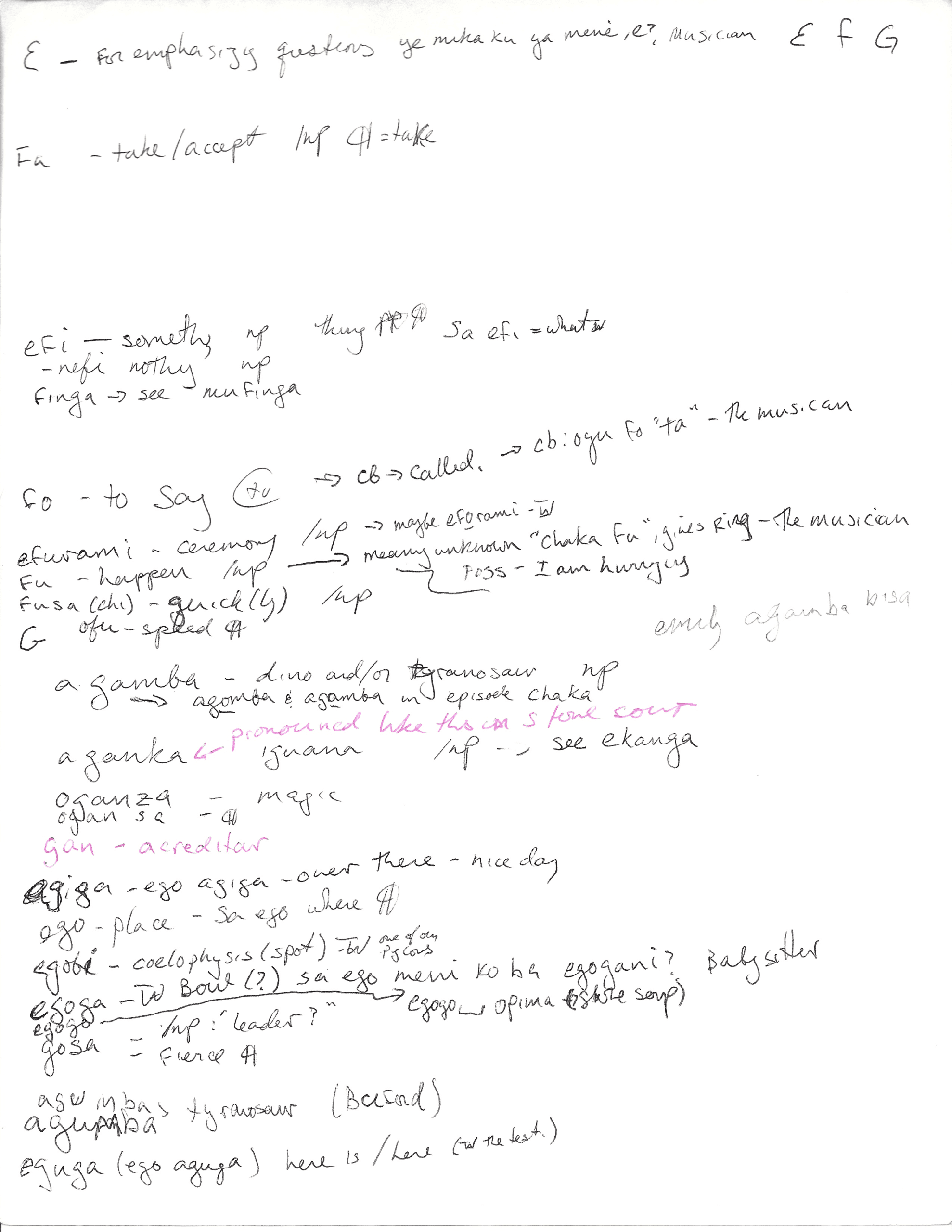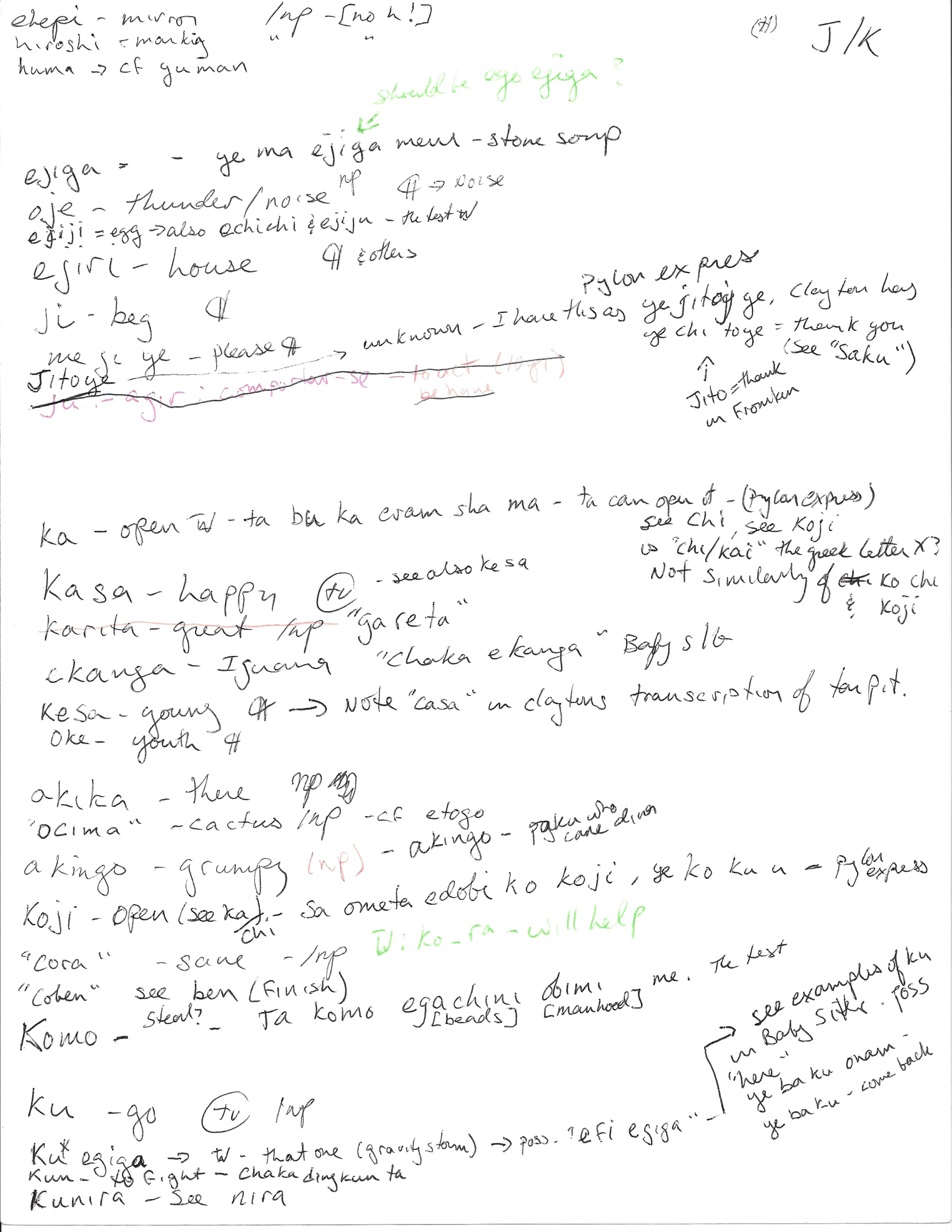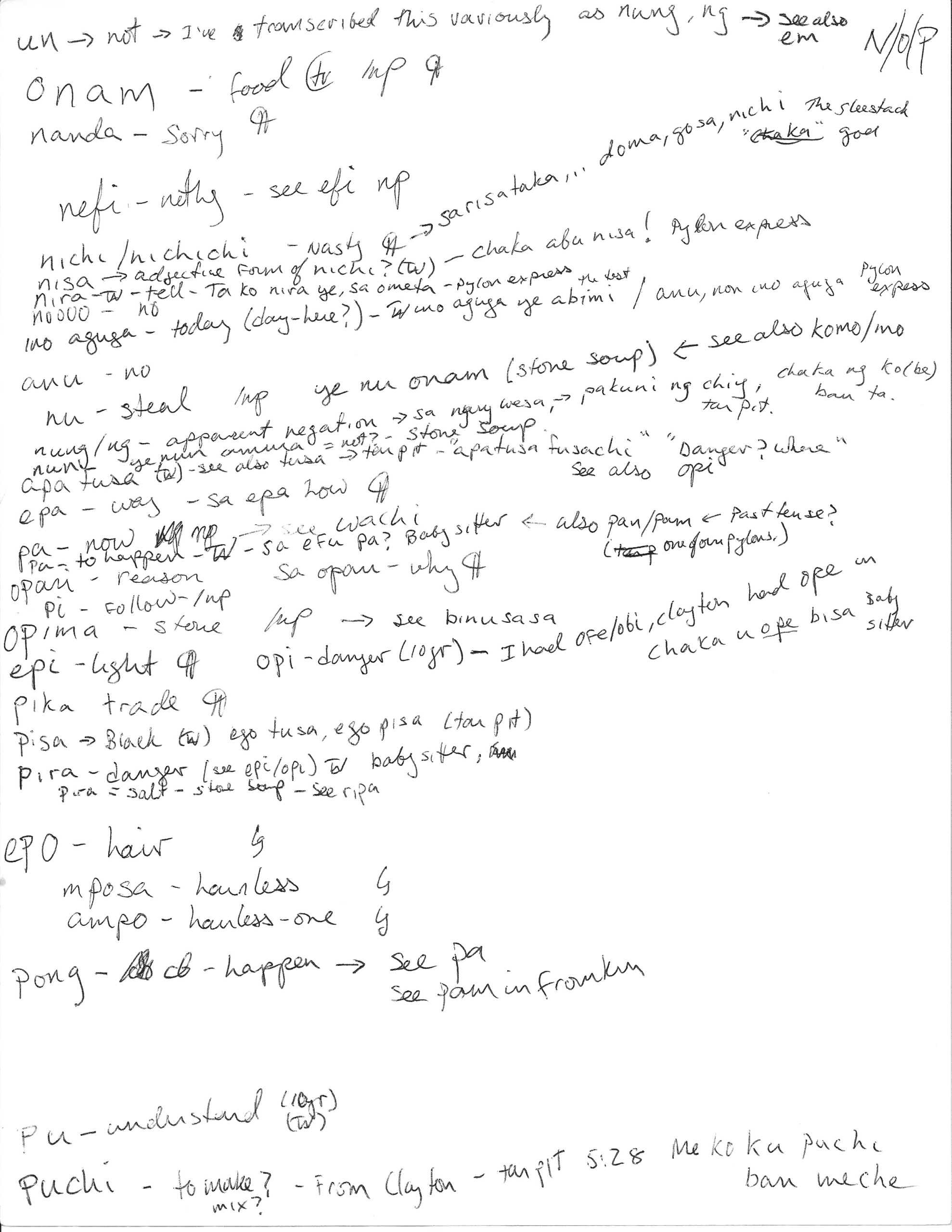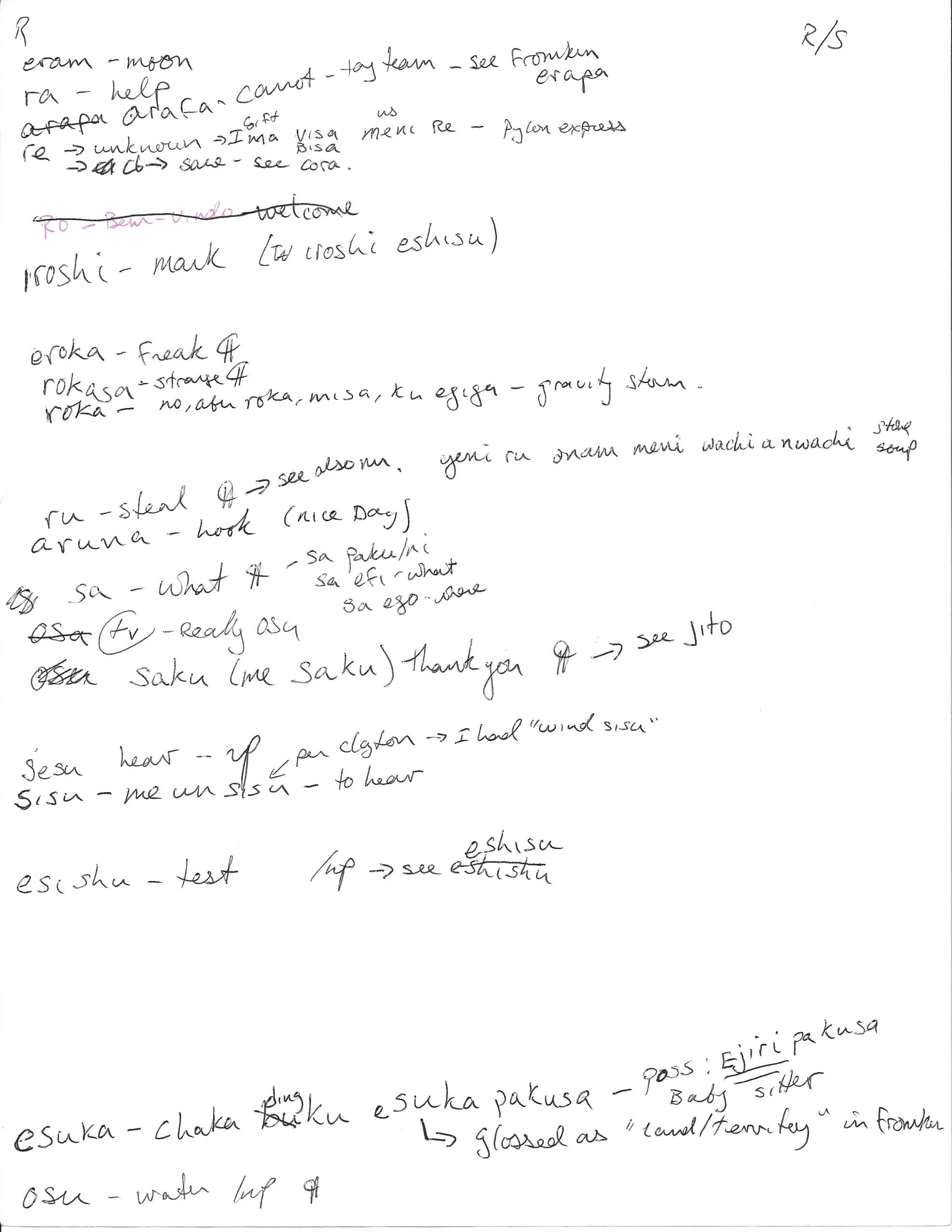Dizionario Pakuni completo illustrato!
!
Autore: Tommaso Alessandro
!
Data della SM: 01-11-2014!
!
Data FL: 02-01-2014
!
Numero FL: Florida-00001D-00!
!
Citazione: Alessandro, Tommaso. 2014. “Comprehensive
Illustrated Pakuni Dictionary.” FL-00001D-00,
Fiat Lingua,
Feb. 2014.!
!
Diritto d'autore: © 2014 Tommaso Alessandro. Questo lavoro è
concesso in licenza con un'attribuzione Creative Commons-
Non commerciale, senza derivati 3.0 Unported License.!
!
!
http://creativecommons.org/licenses/by-nc-nd/3.0/
!
Fiat Lingua è prodotto e gestito dalla Language Creation Society (LCS). Per maggiori informazioni
riguardo alla LCS, visita http://www.conlang.org/
Dizionario Pakuni completo illustrato
By Thomas Alexander
January 11, 2014. This document is the property of Thomas Alexander, but may be freely copied and
distributed provided that this notice is also included, and a link to the original location of this document is
included as well.
Foreword – A personal introduction
Pakuni, the language spoken by the “Monkey Men” in Sid and Marty Kroftʼs “Land Of
The Lost” was created by the late Victoria Fromkin, a linguist from UCLA. I have long
enjoyed learning languages (this includes national languages as well as constructed
lingue). One day I decided to learn Pakuniʼs “300 words” (an oft-quoted number). Esso
was going to be a simple undertaking. Iʼd look up the Pakuni language courses on the
internet, make my flash cards, and in a few months Iʼd have it all down solid.
What I found, Tuttavia, was that while this language was well known to fans of the
show, it was not well documented. The official information about the language
(published while the show was still airing or shortly thereafter) was limited and
sometime contradictory. A few fans of the show had put together some notes, but the
spelling rules were somewhat arbitrary, and there were still many Pakuni words used in
the show which did not have documented meanings. An additional point of confusion is
that at least one fan had made up her own version of Pakuni with her own words and
this dictionary was being referenced by other authors as if this was part of Fromkinʼs
lingua.
In 2009 I pulled all the available information together and set out to watch all the
episodes to translate all known examples of Pakuni. The result is the accompanying
dictionary. It was always my intention to put this information on line, but it was never
quite clear to me where I should put it, and I never got around to re-writing it in a way
that would make sense to anybody other than myself. Ora (2014) thanks to the
encouragement of some folks on the CONLANG mailing list and especially the people
at Fiat Lingua, I have decided to put my 11 page dictionary on-line as is. I am grateful
for this assistance.
I am also indebted to Nels P. Olsen and Clayton Barr for their work in documenting the
Pakuni language. Olsenʼs dictionary and Barrʼs episode summaries (with Pakuni dialog)
was of immense value in the preparation of this dictionary.
Note on Method
When I decided to undertake my own study of Pakuni, I watch each episode multiple
times. First I would transcribe the Pakuni dialog from one episode and include any
relevant context that would help us understand what was being said. Then I would
compare my transcriptions to Barrʼs. If there was a disagreement on what was said, IO
would go back and watch that portion until I was sure that I had transcribed it as best as
possibile. This formed the corpus on which the dictionary was founded.
I prepared an alphabetical word list and included every known translation from other
dictionaries. When several sources agreed with each other (and when the meaning fit
what I was seeing on the screen), I simply listed the source. If there was some
disagreement or uncertainty, I included an example from the corpus.
Note on Sources
On the first page of the accompanying scans, there is a list of symbols that represent
the source for a word. All these sources should be easy enough to find on line.
The first (TV) is the TV Guide article on Pakuni. Il secondo (lg) is a “Pakuni Language
Test” from a linguistics class. Next is (ff) which represents the Encyclopedia of Fictional
and Fantastic Languages. The symbol (np) is for references to Nels P. Olsenʼs
dictionary. The paragraph symbol (PP) is used for the Pocket Pakuni Dictionary from the
book Puffinstuff and Other Stuff. I also included words from a foreign language
dictionary which I believe was in Portuguese. Clayton Barr had sent me an unpublished
list of words. I believe this is what I am referring to with (cb). Hal Erickson (HE) is a
reference to Sid and Marty Krofft, A Critical Study of Saturday Morning Children’s
Television, 1969-1993, by Hal Erickson, which includes a short list of words.
Late in the production of these notes, I received a copy of Fromkinʼs own description of
the language fro 1995. There are important differences between what is in these notes
and what was in the show. References to this document are indicated by (F95).
Finalmente (10yr) appears to be a reference to “Land of the Lost – Ten Years Gone.” This is a
variation of Fromkinʼs Pakuni and includes many words that were made up by a person
known online as Laurel. In the time since 2009 when I prepared my notes, Laurel has
revised her web page making it easier to see which words are Fromkinʼs and which
ones are her own. Since she quotes the same sources I list above, it was seldom
necessary to quote her dictionary. Tuttavia, some of these “made up” words did end up
in my dictionary mostly via (ff).
Words attested to only by (ff) will need to be removed from this dictionary. Ci sono
other words included that are not attested to elsewhere. These will need to be sorted
out and probably removed too.
This symbol
, or the initials “twa” indicate that this is a meaning I have determined
from context, or that I am expressing a question or doubt about the information being
quoted.)
One other source worth mentioning is the dictionary from the DVD set. This turned out
to be more or less the same as one of the other sources listed above.
Pakuni Alphabet
A B Ch D E F G I J K M N Ng O P R S Sh T U W Y
These are pronounced more or less as you would expect them to be pronounced from
English. A E I O U should be pronounced approximately as
”
”
”
”
”
UN – padre
E – odio
IO – heed
O – boat
U – hoot
(Examples taken from Fromkinʼs 1995 description of the language.)
The letter Z is sometimes included, but is only found in the word “oganza” – che è
most credibly “ogansa” based on everything else we know.
Syllables are consonant + vowel + m/n/ng
Quick Notes on Grammar
Nouns begin with a vowel showing what category of object they are. Words in the
dictionary are alphabetical by root word. Cioè, “etimi” (pesce) will be listed under T. IL
prefix vowels were transcribed based on how the actors pronounced the words, Quale
was not always clear. Additional notes have come to my attention, but I have not sorted
through them yet.
Word order is SVO, and adjectives follow nouns. Adjectives and nouns take a plural
ending (-ni).
The last syllable of a word can be repeated for emphasis. “Bisa” means big. “Bisasa”
means very big.
Miscellaneous Notes
The language is generally referred to as “Pakuni” which is the Pakuni plural of “Paku”,
then name of the monkey men from the show. Fromkin tended to call the language
“Paku.”
Most of the examples of Pakuni that we have were spoken by a child actor wearing
false teeth. The dictionary includes variations in pronunciation. The final version of this
dictionary will include these as well so that it can be used to translate lines from the
show. When the “correct” form of the word can be determined, this will be indicated.

